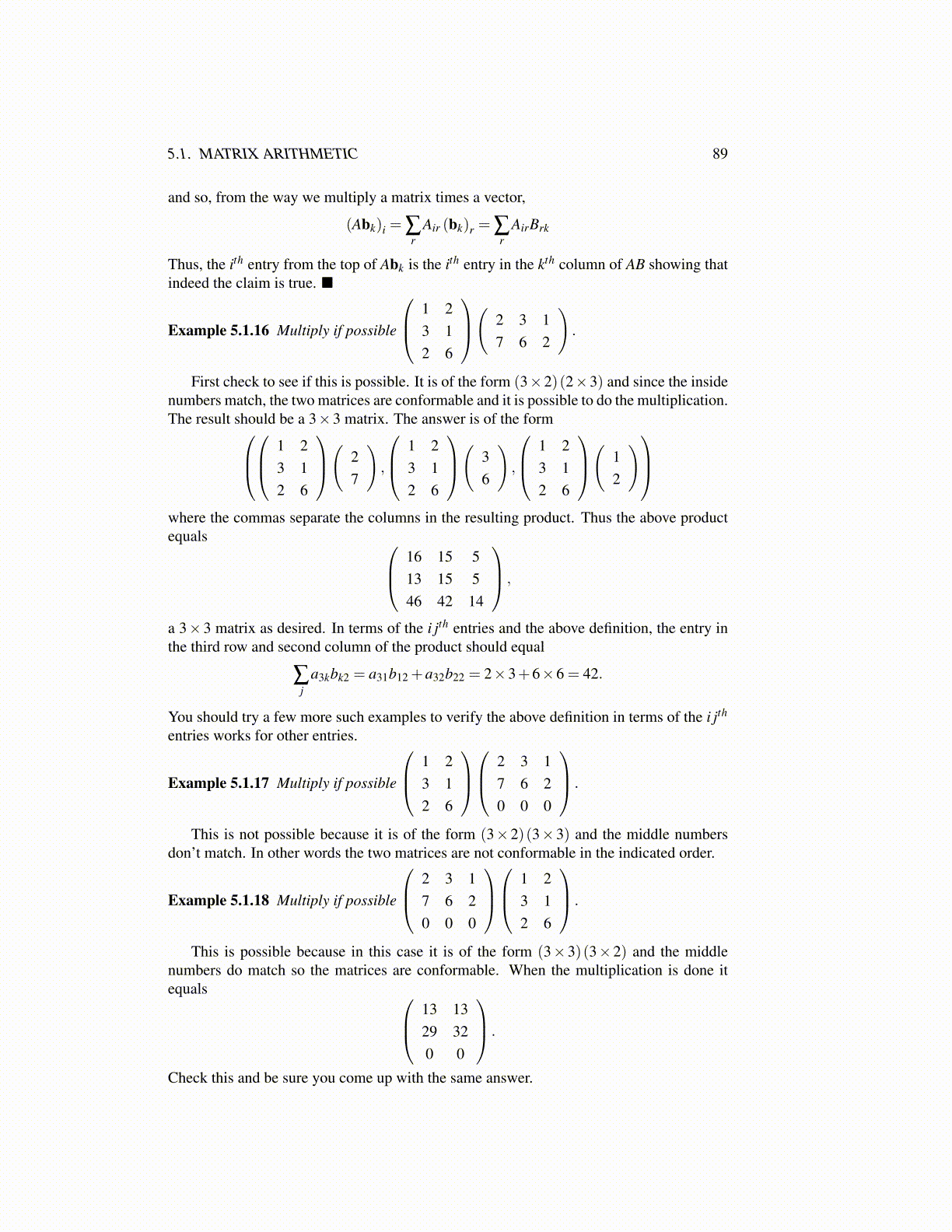
5.1. MATRIX ARITHMETIC 89
and so, from the way we multiply a matrix times a vector,
(Abk)i = ∑r
Air (bk)r = ∑r
AirBrk
Thus, the ith entry from the top of Abk is the ith entry in the kth column of AB showing thatindeed the claim is true. ■
Example 5.1.16 Multiply if possible
1 23 12 6
( 2 3 17 6 2
).
First check to see if this is possible. It is of the form (3×2)(2×3) and since the insidenumbers match, the two matrices are conformable and it is possible to do the multiplication.The result should be a 3×3 matrix. The answer is of the form
1 23 12 6
( 27
),
1 23 12 6
( 36
),
1 23 12 6
( 12
)where the commas separate the columns in the resulting product. Thus the above productequals 16 15 5
13 15 546 42 14
,
a 3×3 matrix as desired. In terms of the i jth entries and the above definition, the entry inthe third row and second column of the product should equal
∑j
a3kbk2 = a31b12 +a32b22 = 2×3+6×6 = 42.
You should try a few more such examples to verify the above definition in terms of the i jth
entries works for other entries.
Example 5.1.17 Multiply if possible
1 23 12 6
2 3 1
7 6 20 0 0
.
This is not possible because it is of the form (3×2)(3×3) and the middle numbersdon’t match. In other words the two matrices are not conformable in the indicated order.
Example 5.1.18 Multiply if possible
2 3 17 6 20 0 0
1 2
3 12 6
.
This is possible because in this case it is of the form (3×3)(3×2) and the middlenumbers do match so the matrices are conformable. When the multiplication is done itequals 13 13
29 320 0
.
Check this and be sure you come up with the same answer.